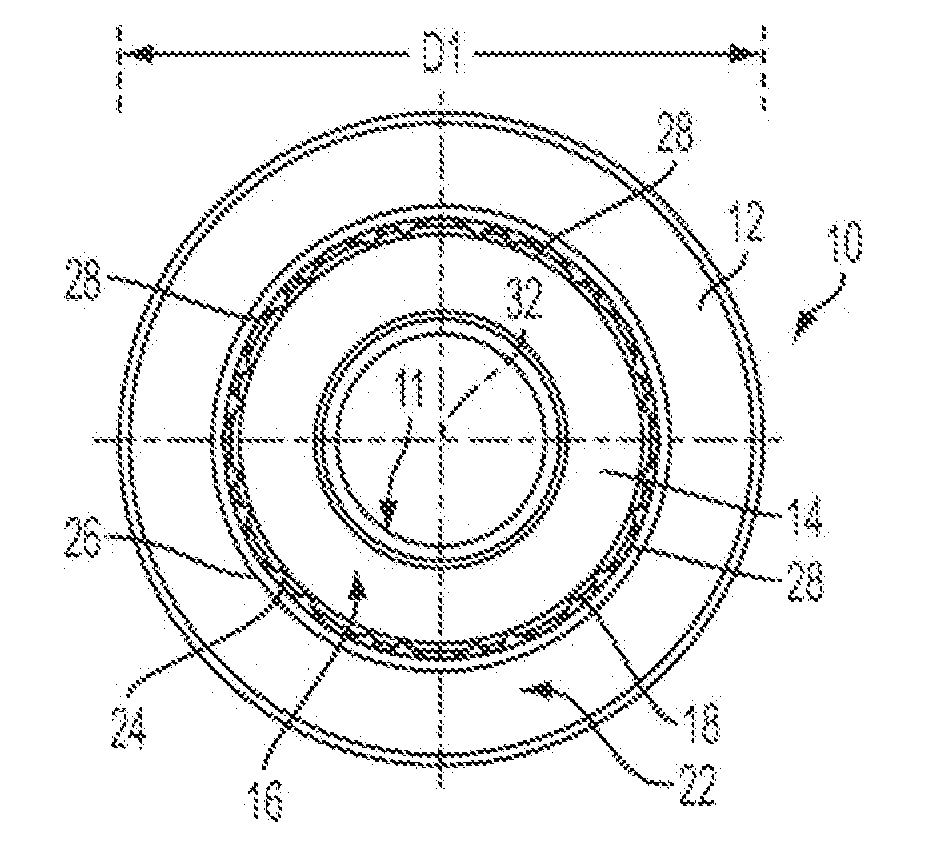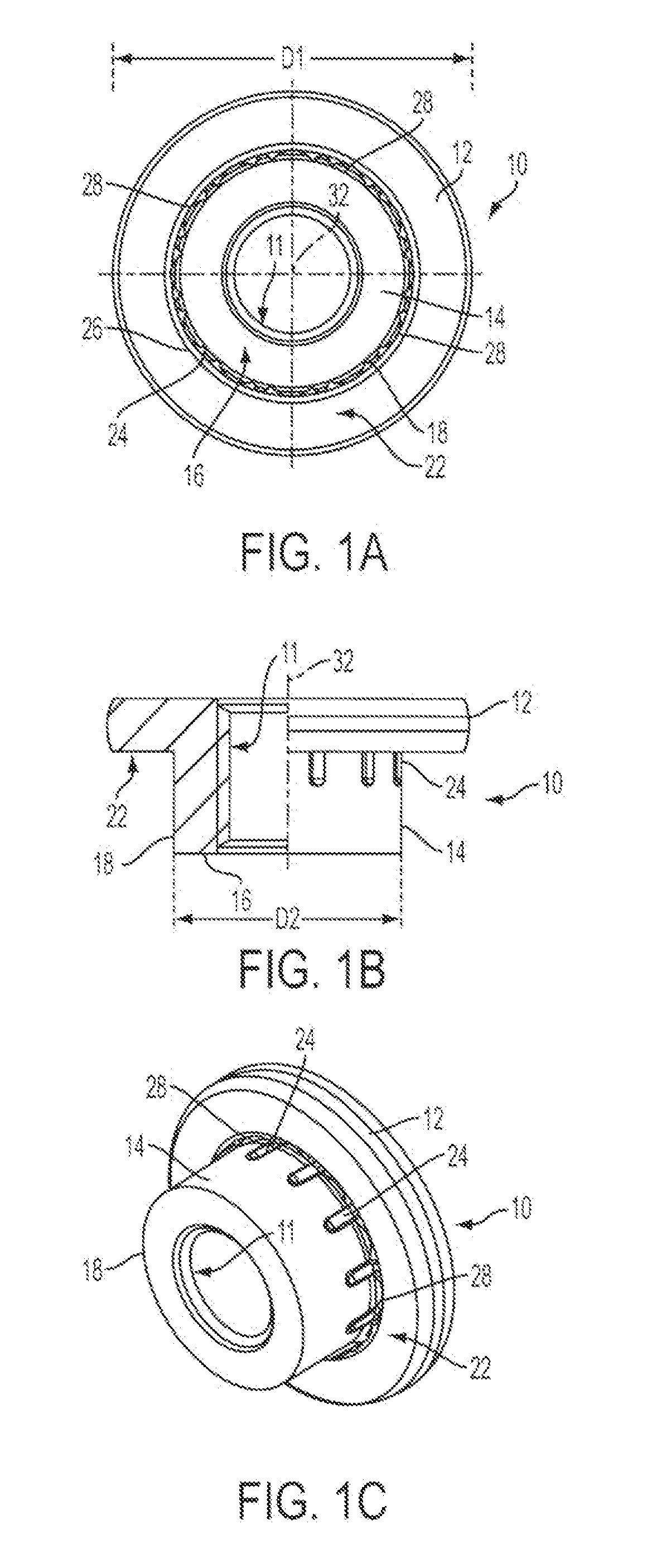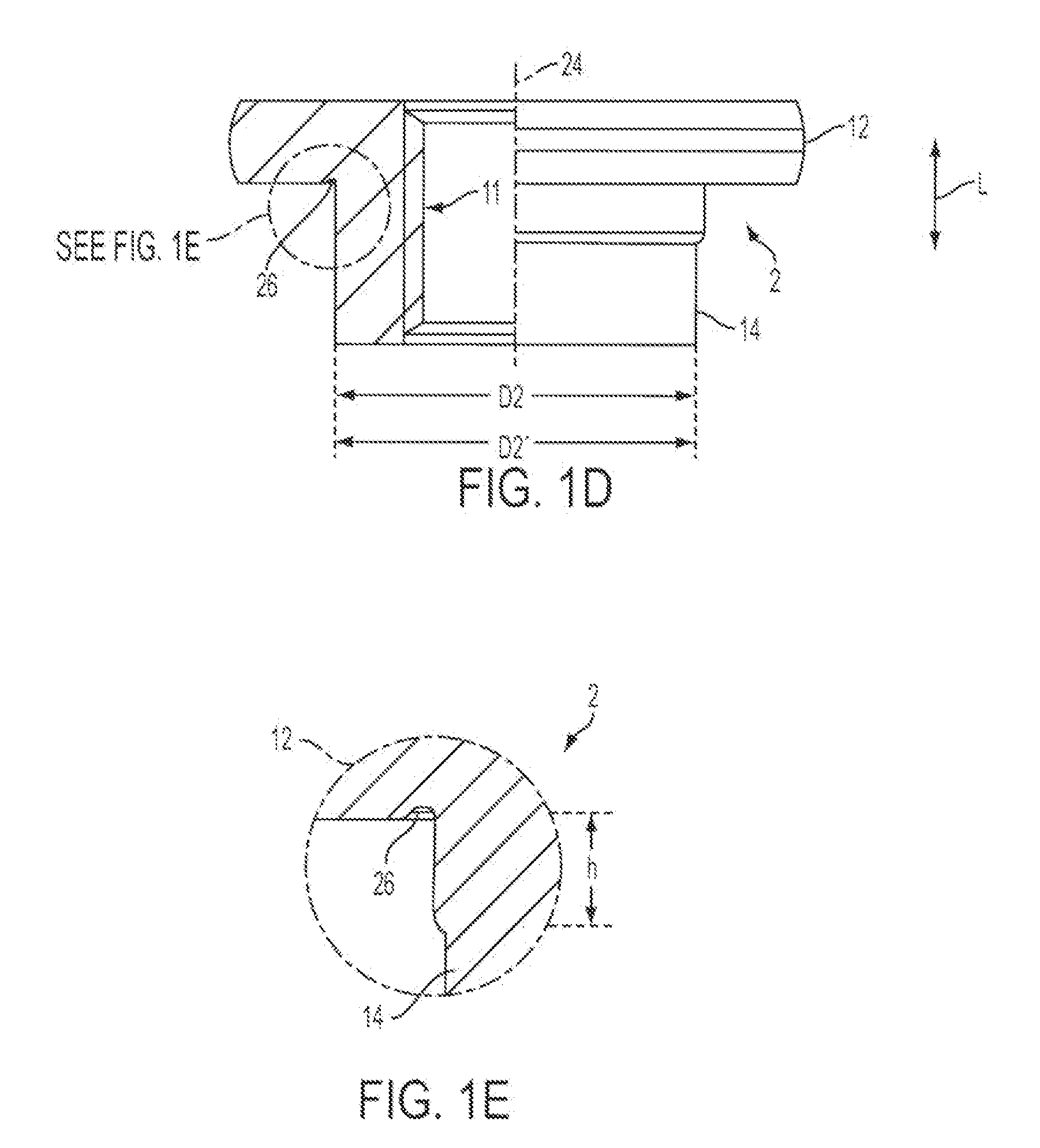Press-in element, component assembly consisting of a press-in element and a sheet metal part and also methods for the manufacture and attachment of a self-piercing press-in nut
a self-piercing, press-in element technology, applied in the direction of nuts, fastening means, applications, etc., can solve the problems of unusable use, unusable weld elements with diverse sheet metal parts, unusable contamination of sheet metal parts, etc., to achieve rational use and manufacture at favorable prices
- Summary
- Abstract
- Description
- Claims
- Application Information
AI Technical Summary
Benefits of technology
Problems solved by technology
Method used
Image
Examples
Embodiment Construction
[0038]The FIGS. 1A to 1C show a self-piercing hollow press-in element 10 in the form of a nut element in attachment to a sheet metal part. The press-in element 10 has a flange part 12 of a larger diameter D1 and a shaft part 14 of smaller diameter D2, with the shaft part 14 extending away from the flange part 12 and having a circular piercing edge 18 at its end 16 remote from the flange part 12. The side of the flange part 12 adjacent the shaft part 14 forms a sheet metal contact surface 22 of ring-shape and features 24 providing security against rotation are provided at the shaft part. These features extend from approximately the level of the sheet metal contact surface 22 over a part of the length of the shaft part 14, for example over about 40% of the length of the shaft part 14 along the latter.
[0039]A ring-shaped recess 26 is provided in the flange part 12 radially within the sheet metal contact surface 22 of ring shape. The ring recess 26 can also be recognized in the blank in...
PUM
| Property | Measurement | Unit |
|---|---|---|
| diameter D2 | aaaaa | aaaaa |
| diameter D2 | aaaaa | aaaaa |
| diameter D2 | aaaaa | aaaaa |
Abstract
Description
Claims
Application Information
 Login to View More
Login to View More - R&D
- Intellectual Property
- Life Sciences
- Materials
- Tech Scout
- Unparalleled Data Quality
- Higher Quality Content
- 60% Fewer Hallucinations
Browse by: Latest US Patents, China's latest patents, Technical Efficacy Thesaurus, Application Domain, Technology Topic, Popular Technical Reports.
© 2025 PatSnap. All rights reserved.Legal|Privacy policy|Modern Slavery Act Transparency Statement|Sitemap|About US| Contact US: help@patsnap.com



